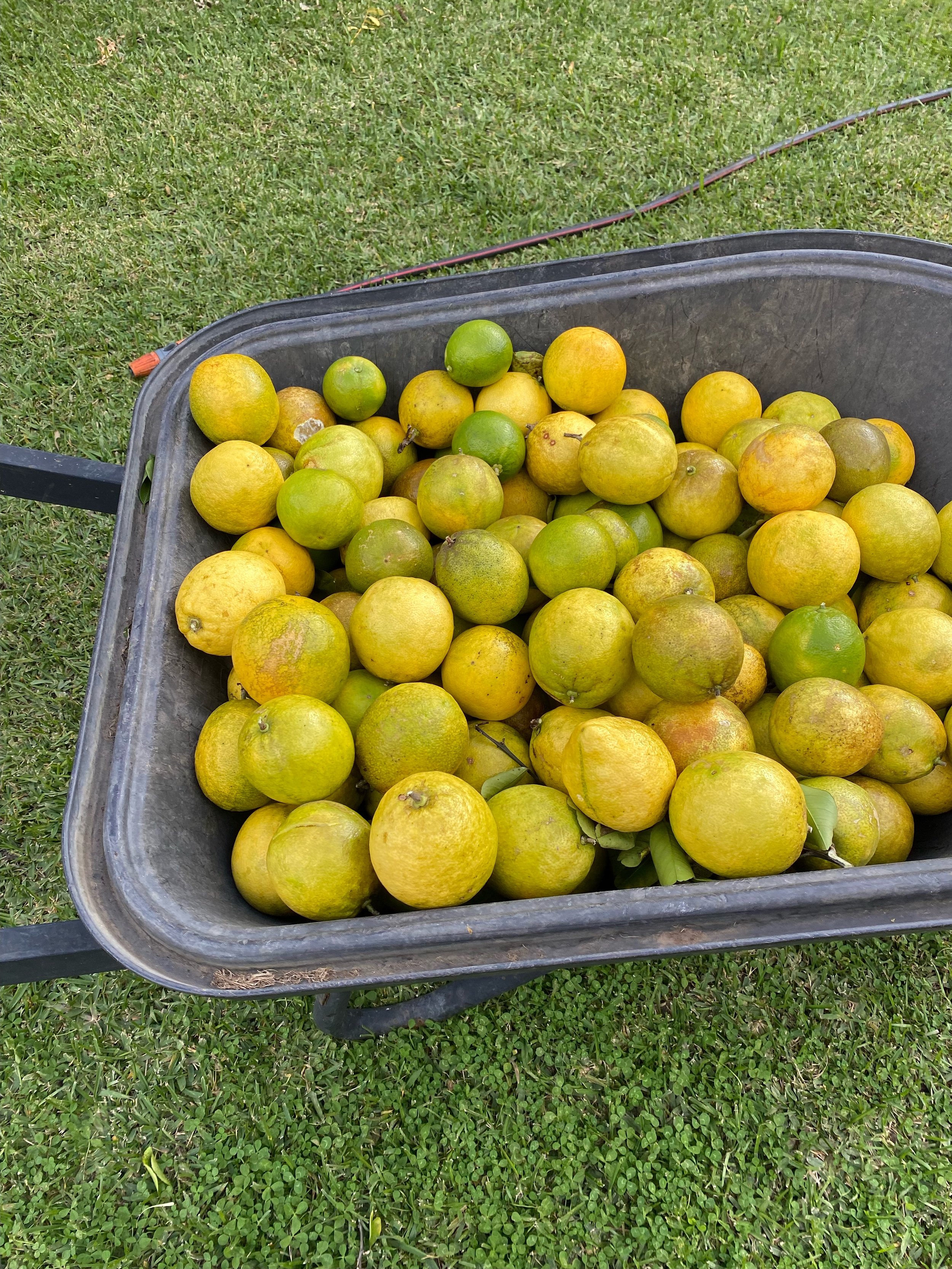My parents grow a bunch of fruits and vegetables at home. Their little garden produces about 1000 oranges, all at the same time. So my mum calls around to see if any of her family and friends will take some off her hands. My parents would make trips to all their friends’ places with boxes of oranges. We can never get through our box. Sometimes, we secretly throw some away. I feel bad about it.
My parents love growing their own produce and cooking with it. Gardening is something they do as a hobby. They like the communal aspect too. There is often produce-exchange happening amongst their friends, all growing different things at home.

Let’s think of my parents’ oranges as a business. They are producing something of value that others want. In most cases, people pay them back with their own produce, hospitality or heart-felt thank yous’, instead of money. However, they have an oversupply problem. Their “business outcome” (or goal) has become to distribute as much of their produce as possible before it goes bad. This, however, is not an outcome I am interested in. In fact, being involved in it makes me feel bad.
Most businesses have the same problem. They come up with some goal to hit… “move 1 million units this quarter” or “decrease customer support calls by 5%”. Customers don’t care about these one bit.
I do love oranges from my parents. I want them, just not 100 at the same time. Therefore, the “customer outcome” I have is “to be fed tasty oranges on a hot summer day”.
How do we further business outcomes and customer outcomes together?
This is where we have to do some market analysis. Understand our customers better and solve problems they have. There are many ways to do that. “Jobs to be done” by Clayton Christensen comes to mind (the story about McDonald’s Milkshake sales). Better insights we have of customers, more confident we can be about opportunities we identify. These opportunities should “kill two birds with one stone”. They will solve a problem for a customer, leading to the business outcomes being met.
In my parents’ case, the opportunities identified should help them distribute excess produce. They could…
Sell it at a local market
Sell it to the local fruit shop
Put it in a box and leave it by the footpath for anyone to take
Throw excess away
Make orange juice and distribute that instead
Number of these are good ideas. How do we narrow the field? I’m going to stretch this example further and talk about “product vision”. Usually, there are many entities solving the same problem. Whether it is selling fast food or travel accommodation, many companies are trying to fill the same core need. To carve out a piece of the market, it is important to have a vision that speaks to a company’s identity. Customers can align themselves to this identity a lot better. It will also produce an opinionated product, this is differentiated in the market. As an example, many smartphones… perhaps only one company is thinking privacy first.

For my parents, gardening is a fun activity. They don’t care about making money from it. They do enjoy the communal aspect of it. Given all opportunities, making orange juice fitted them the most. More people like juice; it is convenient, easy to store, transport and drink. They repurposed empty glass bottles to store juice and distribute them around instead. I am a big fan of these compared to cutting up oranges one at a time.
Both business and customer outcomes met.


Leave a Reply